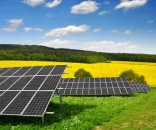
Indian industry group calls for urgent reforms in power distribution
The Confederation of Indian Industry called for reforms in the power sector, particularly pointing out the need to curtail transmission and distribution losses .
Losses of state electricity boards were at over Rs 1,00,000 crore in the 2009-10 fiscal, and account for a large proportion of the fiscal deficit and subsidies in state budgets, increasing the burden on state finances without coming anywhere near providing 24×7 power for all, CII said in a report.
”The financial loss has been estimated at 1.5 per cent of the national GDP. This will act as a major deterrent to the private as well as global investments in the sector,” CII director-general Chandrajit Banerjee said.
Combining theft and agricultural subsidy, on an average almost 40 per cent of the power generated has little or no cost recovery, imposing burden on the other consumers, CII points out.
”The key issue facing the SEBs is cost-tariff mismatches. While there have been no substantial tariff revisions
in the past five or six years, power procurement costs have risen sharply,” the report added.
With mounting losses, the ability of the SEBs to buy power is also curtailed, leading to constant load shedding, he added. Among the CII’s many suggestions for reforming the distribution sector is to increase competition in power distribution through adoption of a franchisee route and increase private participation through public-private partnerships.
Another is implementing an ‘open access’ system, which would provide electricity buyers the option to select their source of supply. High-paying industrial or commercial consumers could procure power directly from power generators or another SEB providing cheaper power.
This would not only ensure uninterrupted power supply to the consumers, but it would also promote competition amongst SEBs and power generators.
Another CII suggestion is to place electricity under the purview of the proposed goods and services tax. This will ensure that input tax credits can be availed of, which would help balance the withdrawal of exemptions and concessions. Exemption from additional customs duty and service tax should be extended to all power projects.
The practice of cross-subsidising agricultural consumers with domestic users and other consumer segments such as industries and commercial units has in large part contributed to the deteriorating financial health of the SEBs. For instance, 23 per cent of the electricity supplied to the agricultural sector yields less than 6 per cent of the SEB
revenues, the report points out.













 Advertise
Advertise











